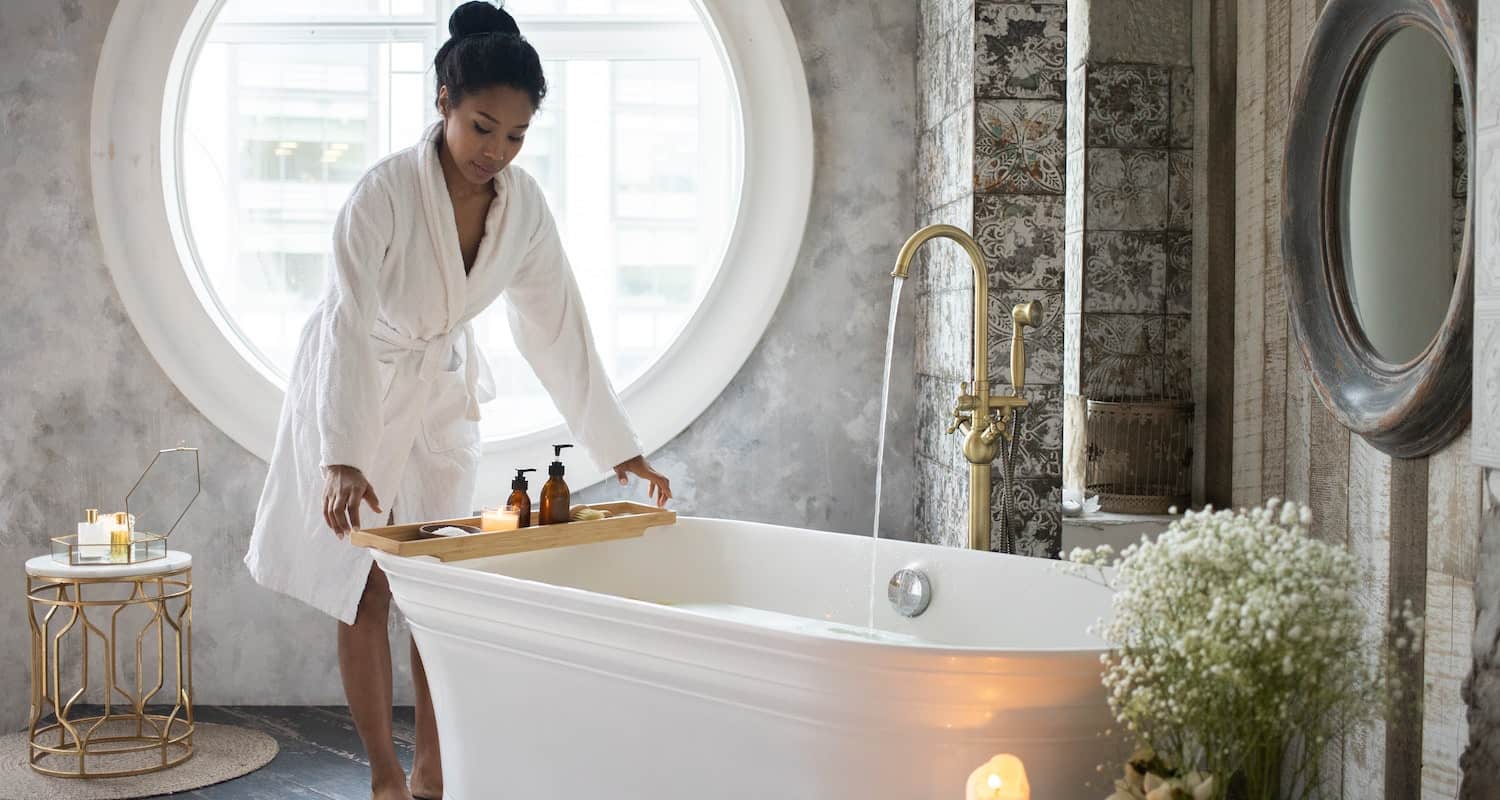Are Hotel Hot Tubs Safe? A Comprehensive Guide
Soaking in a hot tub can be a luxurious and relaxing experience, but when it comes to hotel hot tubs, the question of safety often arises. With shared facilities and potentially lax maintenance, the risk of contracting infections or experiencing other health issues is a valid concern.
If you’re short on time, here’s a quick answer to your question: Hotel hot tubs can be safe if proper maintenance and hygiene protocols are followed, but there are potential risks involved that guests should be aware of.
In this comprehensive article, we’ll delve into the potential dangers of hotel hot tubs, the precautions you can take to minimize risks, and the steps hotels should follow to ensure the safety of their guests.
We’ll also explore the benefits of hot tub use and provide tips for a safe and enjoyable experience.
Potential Risks of Hotel Hot Tubs
Bacterial and Viral Infections
Hotel hot tubs can be a breeding ground for various bacteria and viruses, posing a significant health risk to users. Inadequate cleaning and improper maintenance can lead to the growth of harmful microorganisms like Pseudomonas aeruginosa, which can cause hot tub rash, swimmer’s ear, and respiratory infections.
Additionally, hot tubs may harbor viruses like norovirus, which can cause severe gastrointestinal illnesses. In fact, according to the Centers for Disease Control and Prevention (CDC), hot tub-related outbreaks of illness are on the rise, with an estimated 33% increase in the number of outbreaks from 2015 to 2019.
Skin Rashes and Irritations
Prolonged exposure to the chemicals used in hot tub water treatment, such as chlorine and bromine, can lead to skin irritation and rashes. These chemicals are necessary to kill harmful microorganisms, but they can also strip the skin of its natural oils, causing dryness, itching, and even blistering.
Additionally, some individuals may have allergic reactions to these chemicals, resulting in more severe skin conditions. It’s crucial to shower before and after using a hotel hot tub to remove any residual chemicals and prevent further irritation.
Respiratory Issues
The warm, humid environment of hotel hot tubs can exacerbate respiratory problems for individuals with conditions like asthma or allergies. The combination of heat and moisture can trigger asthma attacks or make it difficult to breathe.
Furthermore, the chemicals used in hot tub water treatment can release vapors that may irritate the respiratory system. According to a study published in the Journal of Environmental Health, over 60% of hotel hot tub users reported respiratory symptoms after using the facilities.
It’s essential for those with respiratory issues to exercise caution and potentially avoid hotel hot tubs altogether.
Slip and Fall Hazards
The wet and slippery surfaces around hotel hot tubs can pose a significant risk of slips and falls, potentially leading to injuries ranging from minor bruises to more severe fractures or head trauma. Inadequate drainage systems, poor lighting, and a lack of non-slip surfaces can all contribute to this hazard.
Additionally, the combination of heat and water can cause dizziness or lightheadedness, further increasing the risk of falls. According to a study by the National Floor Safety Institute, over 50% of all hotel-related injuries are caused by slips and falls, with hot tub areas being a major contributor.
It’s crucial to exercise caution when entering and exiting hotel hot tubs and to ensure that proper safety measures are in place.
While hotel hot tubs can be a relaxing and enjoyable experience, it’s essential to be aware of the potential risks and take necessary precautions to ensure your safety and well-being. Regular maintenance, proper water treatment, and adherence to safety guidelines can help mitigate these risks and allow you to enjoy a worry-free soak in the hot tub.
😊
Hotel Hot Tub Maintenance and Hygiene Protocols
Ensuring the safety and cleanliness of hotel hot tubs is a top priority for responsible establishments. To maintain a hygienic and inviting environment for guests, hotels must adhere to strict maintenance and hygiene protocols.
These measures not only prevent the spread of waterborne illnesses but also contribute to an overall pleasant and enjoyable experience.
Water Quality Testing and Treatment
Regular water quality testing is a crucial aspect of hot tub maintenance. Hotels typically follow guidelines set by organizations like the Centers for Disease Control and Prevention (CDC) and local health authorities.
This involves testing for various parameters, including pH levels, chlorine or bromine levels, and the presence of harmful bacteria or contaminants. Proper water treatment is then carried out to maintain optimal conditions and eliminate potential health risks.
According to a study by the American Society for Microbiology, hot tubs can harbor various microorganisms, including Pseudomonas aeruginosa, Legionella species, and Mycobacterium species, if not properly maintained.
Therefore, regular water testing and treatment are crucial to prevent the growth and spread of these harmful microbes.
Cleaning and Disinfection Procedures
In addition to water treatment, hotels must follow strict cleaning and disinfection procedures for their hot tubs. This includes draining and thoroughly scrubbing the tub surfaces, as well as cleaning and replacing filters regularly.
The use of approved disinfectants and sanitizers is essential to eliminate any remaining bacteria, viruses, or other pathogens. 😊
According to the CDC, hot tubs should be drained, cleaned, and refilled with fresh water at least once a week or more frequently if heavily used. This helps prevent the buildup of contaminants and ensures a safe and enjoyable experience for guests.
Proper Ventilation and Air Quality
Proper ventilation is another crucial aspect of hot tub safety in hotels. Inadequate ventilation can lead to the accumulation of chlorine or bromine gases, which can be harmful to guests’ respiratory systems.
Hotels should ensure that their hot tub areas are well-ventilated, with adequate air circulation and exhaust systems in place.
Additionally, maintaining good air quality in the hot tub area is important to prevent the growth of mold and mildew. This can be achieved through proper humidity control, regular cleaning, and the use of air purifiers or dehumidifiers if necessary.
By adhering to these maintenance and hygiene protocols, hotels can provide a safe and enjoyable hot tub experience for their guests. It’s a win-win situation – guests can relax and unwind in a clean and well-maintained environment, while hotels can uphold their reputation for excellence and maintain a high standard of cleanliness and safety.
👏
Guest Precautions for Safe Hot Tub Use
Relaxing in a hot tub can be a luxurious and rejuvenating experience, but it’s crucial to take precautions to ensure your safety and well-being. By following some simple guidelines, you can minimize the risks associated with hot tub use and make the most of your soak.
Showering Before and After
One of the most important precautions for safe hot tub use is to shower before and after your soak. Showering beforehand helps remove dirt, sweat, and oils from your body, which can contaminate the water and promote the growth of bacteria.
According to the Centers for Disease Control and Prevention (CDC), showering with soap and water for at least one minute before entering the hot tub can significantly reduce the risk of spreading germs.
After your soak, showering again helps rinse off any residual chemicals or contaminants that may have accumulated on your skin.
Avoiding Hot Tub Use with Open Wounds
It’s essential to avoid using hot tubs if you have open wounds or infections. The warm, moist environment of a hot tub can be a breeding ground for bacteria, and exposing an open wound to the water can increase the risk of infection.
The World Health Organization (WHO) recommends avoiding hot tub use if you have any open cuts, sores, or active skin conditions.
Limiting Time in the Hot Tub
While soaking in a hot tub can be incredibly relaxing, it’s important to limit your time in the water to avoid overheating or dehydration. The Mayo Clinic suggests limiting your soak to no more than 15 to 30 minutes at a time.
Staying in the hot tub for too long can cause dizziness, nausea, and even fainting. It’s also a good idea to take breaks and cool off periodically.
Staying Hydrated
Staying hydrated is crucial when using a hot tub. The heat and humidity can cause you to lose fluids through sweating, and dehydration can lead to headaches, dizziness, and other unpleasant symptoms. Keep a bottle of water nearby and sip it regularly during your soak.
Avoid alcohol consumption before or during hot tub use, as it can increase the risk of dehydration and impair your judgment.
By following these simple precautions, you can enjoy a safe and relaxing hot tub experience. Remember, your health and safety should always be the top priority when using shared facilities like hotel hot tubs. So, take the necessary steps to protect yourself and make the most of your soak. 😊
Benefits of Hot Tub Use
Stress Relief and Relaxation
Soaking in a hot tub can be an incredibly relaxing and rejuvenating experience. As the warm water envelops your body, it can help release tension and melt away stress. According to a study by the National Center for Biotechnology Information, immersion in hot water has been shown to reduce levels of cortisol, the body’s primary stress hormone.
Additionally, the buoyancy of the water can help alleviate pressure on joints and muscles, promoting a sense of weightlessness and relaxation. A hot tub soak can be the perfect way to unwind after a long day or week, allowing you to escape the stresses of daily life and emerge feeling refreshed and rejuvenated.
Improved Circulation and Muscle Recovery
The warm water and massaging jets of a hot tub can work wonders for improving circulation and aiding muscle recovery. As the heat causes blood vessels to dilate, it increases blood flow throughout the body, delivering more oxygen and nutrients to muscles and tissues.
This enhanced circulation can help reduce inflammation and promote faster healing after strenuous exercise or physical activity. According to a study by the National Institutes of Health, regular hot tub use can improve cardiovascular health and lower blood pressure.
😊 Additionally, the massaging action of the jets can help relieve muscle tension and soreness, making hot tubs a popular choice for athletes and fitness enthusiasts seeking post-workout recovery.
Pain Relief for Certain Conditions
For individuals suffering from certain conditions, hot tub use can provide much-needed relief from pain and discomfort. The warm water and buoyancy can help reduce pressure on joints and muscles, alleviating pain associated with conditions like arthritis, fibromyalgia, and chronic back pain.
A study published in the Journal of Rheumatology found that regular hot tub therapy can significantly improve symptoms and quality of life for those with rheumatoid arthritis. Additionally, the soothing warmth and massaging action of the jets can help relax tense muscles and promote better sleep, which is essential for overall health and well-being.
👏
It’s important to note that while hot tubs offer numerous benefits, it’s always a good idea to consult with a healthcare professional, especially if you have any underlying medical conditions or concerns.
By following proper safety guidelines and using hot tubs responsibly, you can enjoy the many advantages they offer while minimizing potential risks. 😍
Tips for a Safe and Enjoyable Hotel Hot Tub Experience
Checking for Visible Signs of Cleanliness
Before stepping into a hotel hot tub, it’s crucial to assess its cleanliness visually. A well-maintained hot tub should have crystal-clear water with no visible debris, scum, or discoloration. Look for signs of proper chlorine levels, as cloudy or murky water could indicate poor sanitation.
According to a study by the Centers for Disease Control and Prevention (CDC), over 60% of public hot tub inspections revealed improper disinfectant levels, posing potential health risks.
Additionally, inspect the hot tub surroundings for cleanliness. The area should be free of dirt, hair, or other unsanitary elements. A well-kept hot tub area is often a good indicator of the hotel’s commitment to maintaining proper hygiene standards.
Don’t hesitate to ask the staff for a quick visual inspection or to test the water chemistry if you have any doubts. 😊
Inquiring About Maintenance Protocols
Reputable hotels should have strict maintenance protocols in place for their hot tubs. Don’t be afraid to inquire about these procedures with the staff. Ask about the frequency of water changes, filter replacements, and cleaning schedules.
A responsible establishment should follow guidelines set by organizations like the CDC or the World Health Organization (WHO).
It’s also essential to inquire about the hotel’s policies regarding hot tub usage. Are there any restrictions on the number of people allowed in the tub at once? Are there specific hours dedicated to adult-only use?
Understanding these rules can help ensure a more enjoyable and safer experience for all guests. 👍
Reporting Any Concerns to Hotel Staff
If you notice any concerning signs during your hot tub experience, such as an unusual odor, cloudy water, or inadequate chlorine levels, don’t hesitate to report it to the hotel staff immediately. A responsible establishment should take such concerns seriously and take prompt action to address the issue.
After all, their priority should be ensuring the safety and well-being of their guests.
Additionally, if you experience any adverse health effects after using the hot tub, such as skin irritation, respiratory issues, or gastrointestinal discomfort, it’s crucial to inform the hotel staff and seek medical attention if necessary.
These symptoms could be indicative of potential bacterial or chemical contamination, and prompt action can help prevent others from being affected.
By following these tips and being proactive in communicating with hotel staff, you can greatly enhance the safety and enjoyment of your hot tub experience. Remember, a little vigilance goes a long way in ensuring a relaxing and worry-free soak in the hotel’s hot tub. 🎉
Conclusion
Hotel hot tubs can be a wonderful amenity, offering guests a chance to unwind and enjoy the therapeutic benefits of warm water immersion. However, it’s crucial to be aware of the potential risks and take necessary precautions to ensure a safe and enjoyable experience.
By understanding the importance of proper maintenance, hygiene protocols, and guest responsibility, you can make an informed decision about using hotel hot tubs. Remember, open communication with hotel staff and vigilance on your part can go a long way in mitigating any potential hazards.
Ultimately, with the right knowledge and precautions, you can confidently indulge in the relaxing and rejuvenating experience of a hotel hot tub without compromising your health and well-being.







